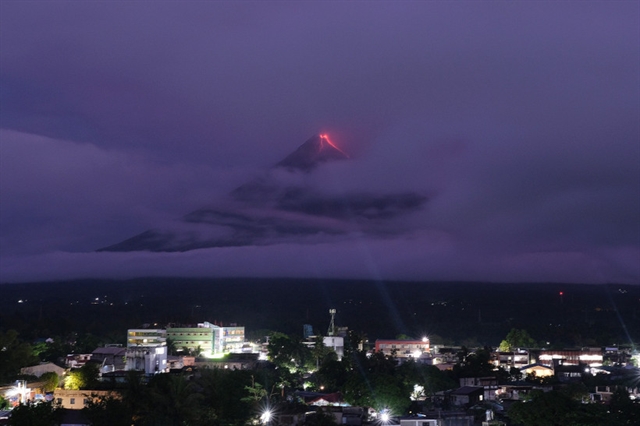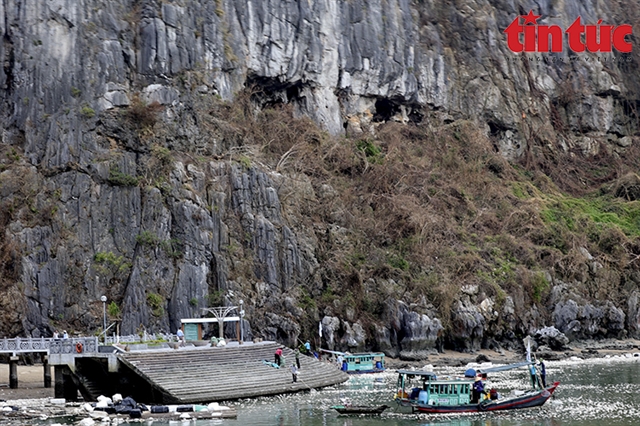.jpg) Environment
Environment

 |
| The dried out trees in front of the entrance to Thiên Cung Cave, Hạ Long Bay, following Typhoon Yagi. — VNA/VNS Photo |
QUẢNG NINH — To accurately assess the effects of super typhoon Yagi on the vegetation of the limestone islands in Hạ Long Bay, the bay's management board has invited experts from the Institute of Ecology and Biological Resources (Việt Nam Academy of Science and Technology) to survey, evaluate the current situation and advise on solutions for sustainable conservation and enhancement of the bay's values.
In the wake of the powerful storm that made landfall on September 7, many trees on the limestone mountains in the world-renowned bay were uprooted, broken, and dried out.
The huge amount of dried leaves and branches poses a high risk of fires, especially as the dry season approaches.
Rxperts have recommended fire prevention measures -- including placing of fire prohibition signs and fire prevention notices -- in high-risk areas such as Đầu Gỗ - Thien Cung Cave, Sửng Sốt Cave, and Ti Tốp Island, which are also popular tourist spots.
According to the findings from the Institute of Ecology and Biological Resources, 100 per cent of the trees on the limestone mountains in the Đầu Gỗ - Thiên Cung Cave and Hang Sò - Ba Hang (Three Caves) areas were affected, with 70 per cent having the potential to recover and 30 per cent unable to recover due to being uprooted.
In the Vung Viêng area, 70-80 per cent of the trees shed their leaves and were damaged.
In areas such as Sửng Sốt Cave, Ti Tốp Island, Hang Cỏ Cave, Mê Cung Cave, and Soi Sim, many trees had broken branches or tops, but only a few were uprooted, and most had a high potential for recovery.
Hạ Long palms in the Ti Tốp Cave area continue to grow under the tree canopy.
Trees in the Tiên Ông - Cửa Vạn area were mostly intact, with 15 Hạ Long palms developing normally. After the storm, many trees have begun to sprout green shoots and new leaves, but it will take 4-6 months before signs of recovery become fully visible.
The assessment revealed that the reduction in vegetation cover on the limestone mountains will negatively affect some endemic plant species and those with landscape value in Hạ Long Bay, such as the Hạ Long cycad, Hạ Long palm, slipper orchids (Paphiopedilum concolor), and bông mộc (Sinoradlkofera minus).
Additionally, it will have a detrimental impact on the habitat of wildlife species, particularly affecting the living environment of certain bird and reptile species, as well as the regular food supply for the Macaca mulatta monkeys living on the islands in the heritage area.
These challenges highlight the need for effective solutions to restore the green landscape on Hạ Long Bay's limestone mountains as soon as possible.
Vũ Kiên Cường, head of the bay's management board, said that it might take up to 10 years for the green covers to be fully restored among the bay's various islands. — VNS




